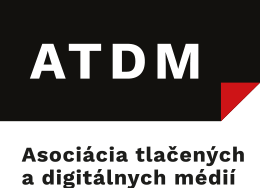In Switzerland that figure is 75 percent.
Ringier is an international multimedia company based in Zurich, Switzerland. Established in 1833, the family-owned brand employs 7,000 people in 20 countries, and owns more than 450 products and services.
In 2020, Ringier saw a turnover of CHF 953.7 million (approximately € 870.45 million).
Two years ago, the Ringier Group launched “EqualVoice,” an initiative that aims to promote diversity in media coverage.
Lea Eberle (Project Manager Group Finance, Ringier, Switzerland) and Stefan Mair (Journalist, Handelszeitung, Ringier Axel Springer, Switzerland) joined WAN-IFRA’s recent Newsroom Summit to explain the “EqualVoice Factor,” a metric that indicates the visibility of men and women in the coverage of Ringier and Ringier Axel Springer Switzerland.
In 2021, Switzerland jumped from 26th to 10th (2020) in the World Economic Forum gender equality ranking.
What is the EqualVoice Factor?
EqualVoice Factor, powered by artificial intelligence (AI), measures how often women and men are represented in the company’s media coverage, and based on that, generates an EqualVoice Score.
What about the inclusion of gender queer identities in Ringier’s coverage? “We are discussing this internally but have decided to start with men and women. It’s the first step, and we still have a long way to go,” said Eberle.
«We contribute to diversity – together we live it» @ringier_ag @RAS_Schweiz #Ringier #RingierAxelSpringer #RASCH #Diversity #WeLiveIt pic.twitter.com/j005rMg4I1
— Ringier AG (@ringier_ag) June 15, 2021
The Ringier Semantic Engine analyses the citation of women and men in articles, and an automatic image recognition tool helps in analysing pictures for the same.
The tool uses a Teaser Score and a Body Score. While the Teaser Score evaluates the representation of both genders in images, headlines and leads, the Body Score analyses the same in the main text of the report.
“We conduct regular reviews of the accuracy of the algorithm and quality of the collected data to ensure overall quality within the EqualVoice-Factor,” said Eberle.
The initiative was launched by Ringier’s CFO Annabella Bassler and is supported by the publisher and owner Michael Ringier and Marc Walder. “We have a wide variety of media products – newspapers, daily tabloids, magazines and news sites. So, the EqualVoice initiative had to be implemented differently at every brand,” said Mair, who has been a part of EqualVoice right from the beginning.
Every brand within Ringier is expected to report to the Board of Directors with its EqualVoices Score, each quarter.
EqualVoice — core topics
Female expert list: Business and Sports beats are notorious for not having enough female representation. “Our journalists said they would like to write more about women, but that there are hardly any women in business and sports,” said Mair.
So, Ringier recruited a few female experts in business and sports, created an internal list and made it available to everyone in its newsrooms. Now, if a journalist wants an expert opinion on sustainable investing or football, they simply need to consult the relevant person from the list.
Photo challenge: To combat the obstacle of not having enough women represented in business stock images, Ringier produced a repository of pictures with women in different financial and business related scenarios for journalists to use in their visual coverage, and supply to agency archives too.
Magazine: With a goal of raising awareness among the Swiss people about gender equality, this magazine will be published in the autumn this year and is expected to have the highest circulation of any magazine in the country.
“We believe that the equality discussion should not be limited only to the Ringier newsroom but across Switzerland,” said Mair.
Equal voices goes international: In the long run, the company wants to expand the equality initiative globally and plans to take the first step by rolling out EqualVoice in Eastern Europe, in collaboration with its partner Axel Springer.
“While Ringier has a wide range of media brands in Poland, Hungary and Serbia, we would like to have other media companies join us and analyse their content with our tool. We are in talks with a few German and Swiss publishers to provide this software as a service,” said Mair.
L’initiative #EqualVoice continue de se développer et s’offre une nouvelle identité visuelle. Plus d’information sous: https://t.co/KoDGczMrZc #Ringier #Initiative #Diversité #Égalité pic.twitter.com/4kJXI06J4t
— Ringier AG (@ringier_ag) June 15, 2021
Pushback
To ensure that women are correctly represented in Ringier’s media coverage, and not merely through the male gaze, the company’s front pages are checked each day by female journalists.
At Schweizer Illustrierte, a Swiss tabloid magazine owned by Ringier, the editor in chief received several emails from angry and annoyed readers who had reservations about the sudden “change” in content coverage and presentation to achieve gender equality.
“The EIC chose to engage with the readers and explain why the changes were being implemented, and eventually they seemed okay with it,” said Mair.
Blick, another Ringier owned newspaper, which used to be heavily male-dominated in its readership, underwent a front page overhaul and achieved 50:50 equality in 2020.
In addition to aiming for equal content coverage, Ringier is aiming for gender balance within its newsroom, but Mair acknowledged there is still work to be done. “In business journalism, we simply have too many men currently, so we cannot have 50 percent articles written by women,” he said.
The post Switzerland’s Ringier uses AI for gender-equal reportage appeared first on WAN-IFRA.
